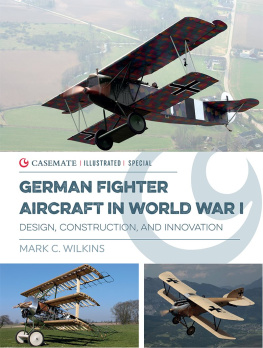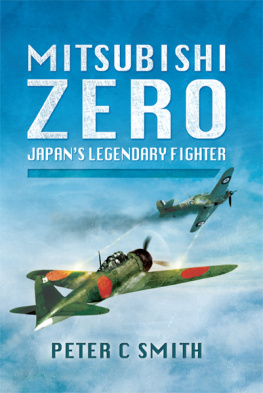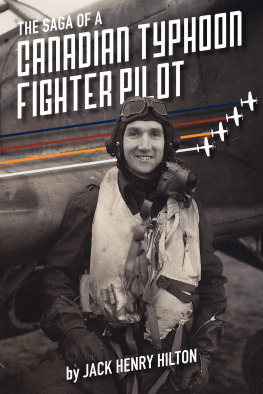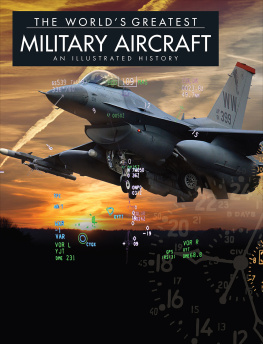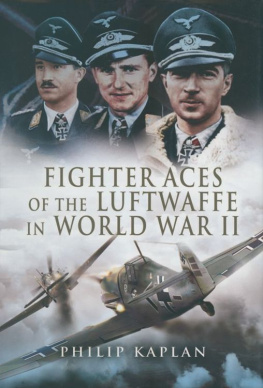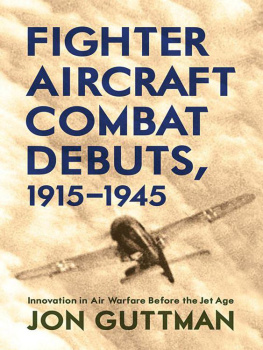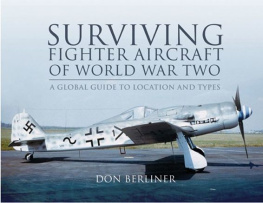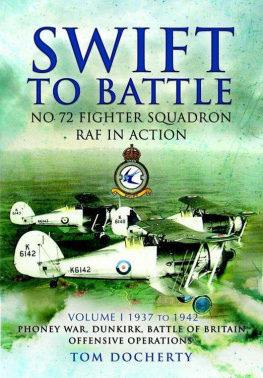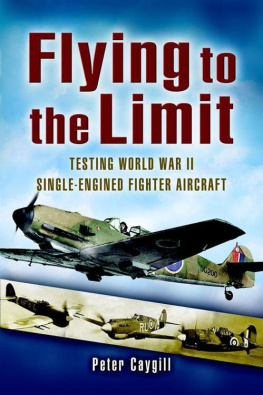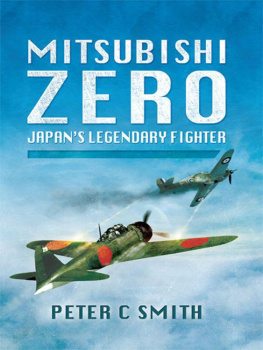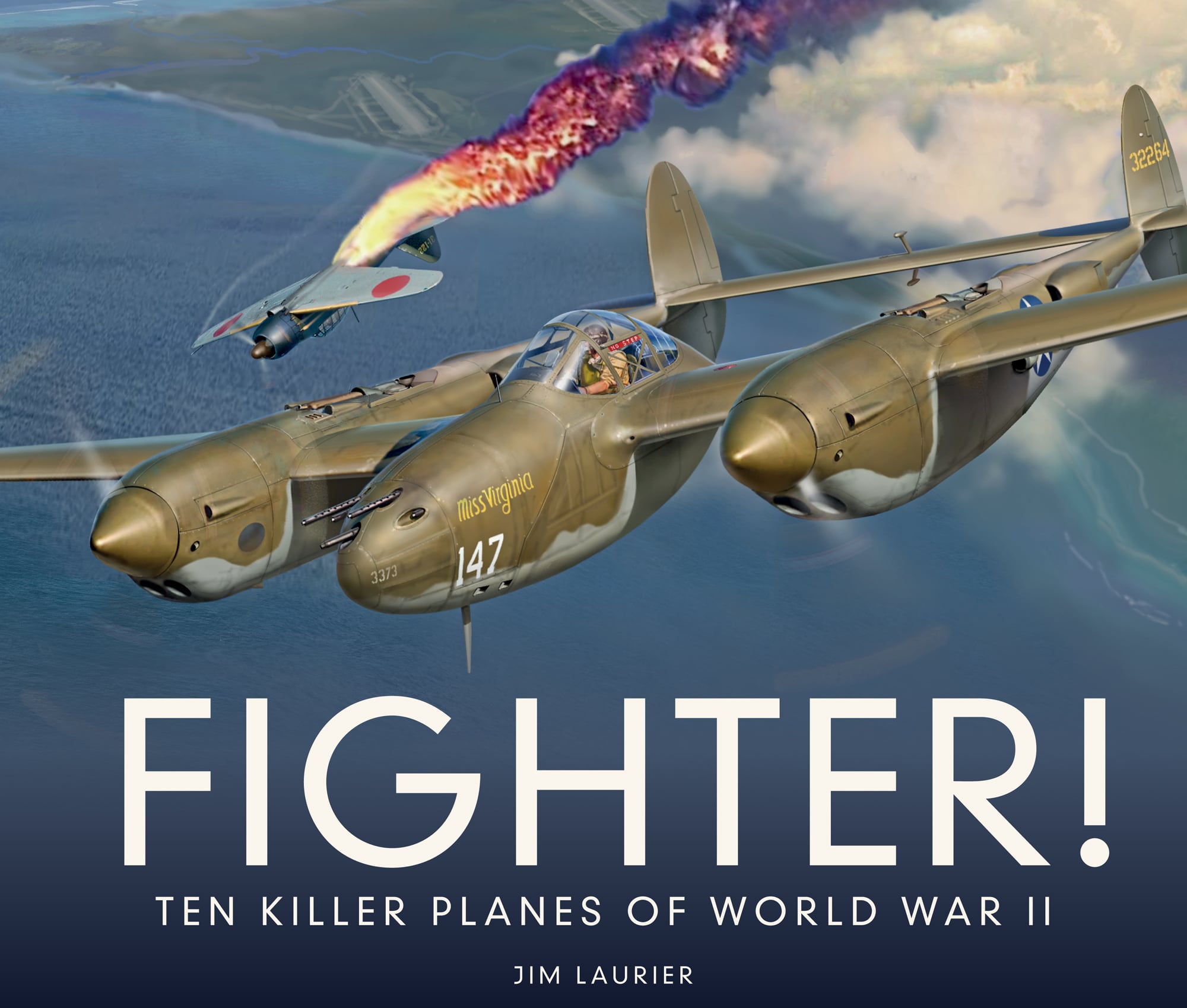I n Jim Laurier, the aircraft of the golden age of propeller flight find a worthy chronicler, not only in language, but also in image. Jims extraordinary renderings of ten legendary planes in Fighter! Ten Killer Planes of World War II bring alive an era of aerial combat long lost in the contrails of jets and missiles and drowned out by the sinister hum of the drone. World War II fighting planes, once the leading edge of their kind, now stand as quaint relics, their nimbleness and speed and armaments humbled by history and technologys unyielding march.
So in steps Laurier, transporting the reader back to when each of these warbirds was the new thingrevolutionary and pivotal, if only for a blink. With his prose and his pictures he banishes modernity, allowing the reader to appreciate the deadly power and martial precision of planes that soared and dove and banked over a world at wardoomed to obsolescence, yet immortal.
Michael Dolan is editor of American History magazine. As senior editor of World War II (20122016), he researched and wrote that magazines Weapons Manual spread, illustrated by the author.
INTRODUCTION
W ar, despite its horrific effects, seems an unavoidable necessity from time to time. I once heard a claim that, in all of human history, there has been only a period of one hundred years during which war wasnt raging somewhere on our small planet. If that is a fact, I suppose it gives stark insight to the aggressive nature of our species.
In the late 1930s, war loomed once again, this time on a global scale. When the fuse was lit, the conflict propagated quickly across borders and oceans until every corner of the world was affected. Governments, armies, and civilians were embroiled in the conflict now known as World War II.
As a pilot, I am of course interested in aviation and have been for most of my life. Ive drawn pictures of aircraft since about age three. I admire piston-powered airplanes most, and the aviation designs of World War II are of particular interest to me. In my mind, the years 1937 through 1945 were the heyday of piston-powered flight. During these war years, military technology made astonishing leaps forward, resulting in new war machines of every conceivable configuration.
Like todays jet-powered fighters, combat aircraft of World War II were designed for a lethal purpose, yet they were also aesthetically pleasing in shape and proportion. They were engineering and design marvels, and when we see and hear them lift into the sky today, they capture our imaginations as much as the concept of flight itself.
In Fighter! Ten Killer Planes of World War II, I have selected what I consider ten pivotal fighter designs of the period and attempted to explain why, to my mind, they were important in shaping the course of the war. For each, I give a brief outline of its development and operational history, along with some technical specifications. Period photos provide further context.
I created the artworks in this book as paintings in oils or acrylics, as digital images with Photoshop, or with a combination of these methods. They are my interpretations of actual events based on my research. In each case I have tried to remain faithful to the technical accuracy of the aircraft as well as the events and locations of the missions in which they were recorded as being involved.
In creating the artworks that illustrate the words, and which are the essence of this book, Ive tried to effectively capture real moments of life-and-death struggle in the skies of World War II. Hopefully these images offer a glimpse of what it looked like in this unique battle arena, and give pause to reflect on how these battles affected not only the lives of those who participated in them, but the lives of all those who anxiously awaited the final outcome.
Regardless of what language the combatants spoke, which country they served, or the era in which they fought, courage, life, and death were the same for each. Any warrior who dares to enter into conflict knowing he or she may have to give their life to save others is worthy of celebration and remembrance. In that spirit, I dedicate this book to all who ever served, and those who currently do.
CHAPTER
MESSERSCHMITT
Bf 109
Bf 109F-2 flown by Geschwaderkommodore Oberstleutnant Werner Mlders, Stab/JG 51, June 1941.
D espite restrictions imposed by the Treaty of Versailles, by the early 1930s Germany was secretly building its aviation arsenal under the guise of developing transport and passenger planes. The aircraft were designed with the unspoken notion of being easily converted to military purposes.
In 1934 Aviation Minister Hermann Gring sent a confidential message to Wilhelm Emil Willy Messerschmitt, asking him to develop a lightning-fast, single-seat, low-wing monoplane. What Gring was really asking of Messerschmitt was to design a new front-line fighter, which became the Bf 109. The aircrafts Bf designation indicated Bayerische Flugzeugwerke, or Bavarian Aircraft Works, the firm that submitted the original design. The fighter would retain those model letters even after Willy Messerschmitt acquired the company and changed its name in 1938.
Messerschmitt and his design team began design work on the new aircraft, incorporating the new features utilized in their Bf 108 Taifun (typhoon) design, which was used as a four-seat light transport. The Bf 108 had the newest features of the period, including retractable landing gear, an enclosed cockpit, and leading-edge slats and trailing-edge flaps in the wings. One of the Bf 109s most distinctive design features, however, was the location of its guns on the centerline of the airplane, which gave it a tightly focused and lethal cone of fire. With two heavy machine guns on the cowling and one cannon firing through the nose, a short, well-aimed burst could bring down anything in the air, including heavy bombers. The Bf 109s nose-mounted weapons and REVI gunsight more than compensated for any shortcomings in its design.
The new aircrafts first production type, the Bf 109A, entered service in the Spanish Civil War in December 1937 and was soon followed in February and March 1938 by the Bf 109B variants. The new Luftwaffe pilots were formed into the so-called Condor Legion and fought for Gen. Francisco Franco y Bahamonde in opposition to the Republican government. The first few months were difficult for the German pilots as they learned to tame the quirkiness of their new fighters. The biggest problem seemed to be the aircrafts narrow-stance landing gear and its tendency to drop its left wing when power was applied for takeoff, resulting in many ground accidents. The problem was caused by the inverted V-12 engines torque roll, for which pilots learned to compensate by applying a lot of rudder during takeoff.


